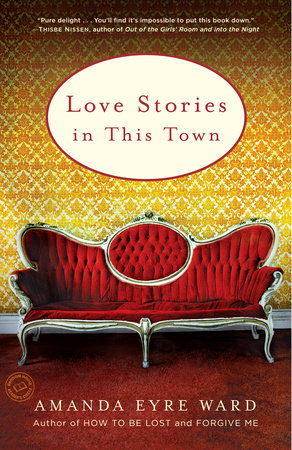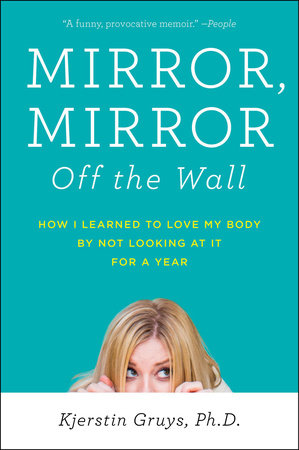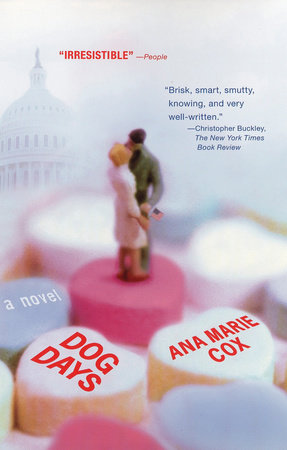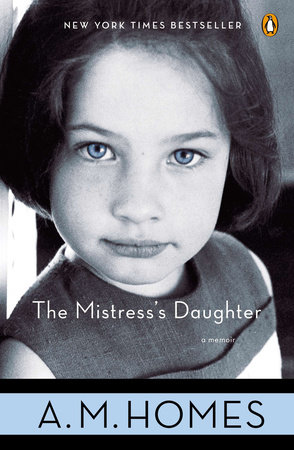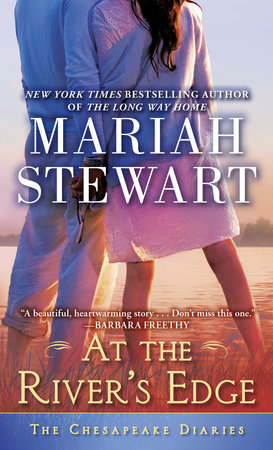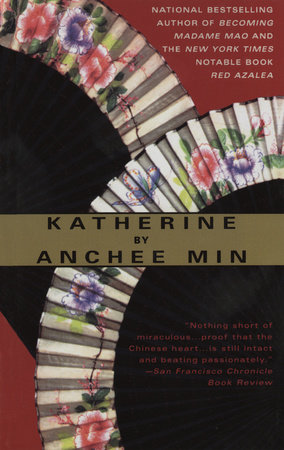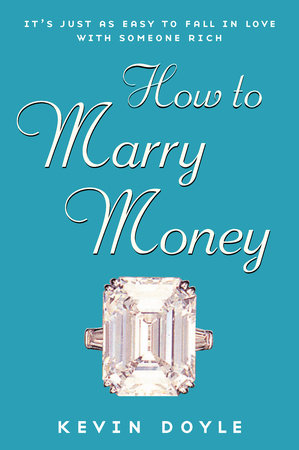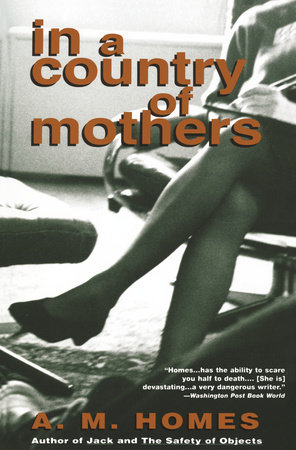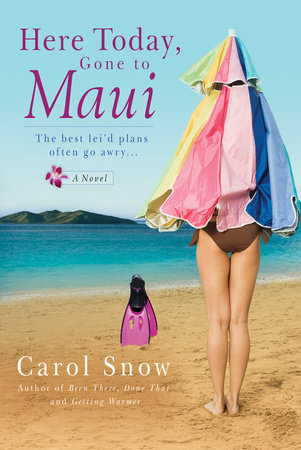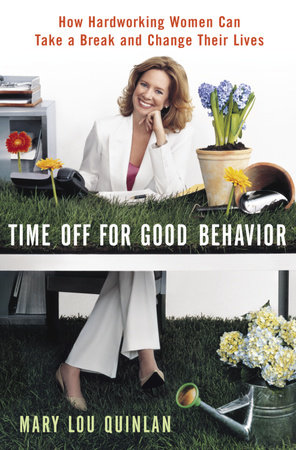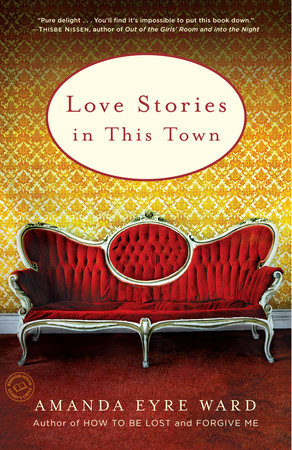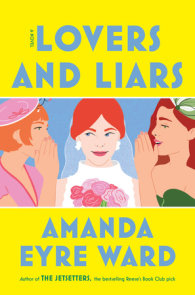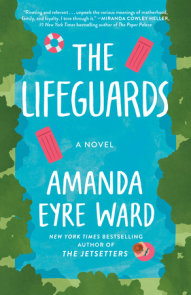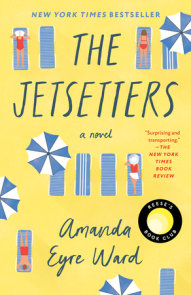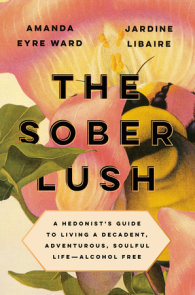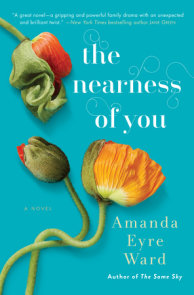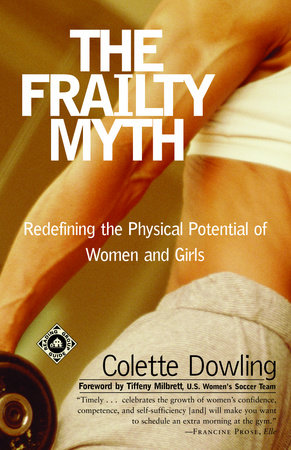Author Q&A
A Conversation with Amanda Eyre Ward
Random House Reader’s Circle: Most of your readers know you as a novelist, but you have actually been a short-story writer for longer than you have been a novelist. Can you talk a little about how and when you first started writing stories?
A: I went to Williams College, where I signed up for Jim Shepard’s Introductory Fiction Workshop. I showed up the first day to find the room packed. Jim (Professor Shepard to me then) told us we could submit one story, and he would choose the members of the small class and post a list on his office door. Many of the other students had folders of stories, neatly stapled, but although I was an avid reader, I had never written a story before. I was reading Denis Johnson and Raymond Carver at that time. I typed all night on my Brother word processor, creating a story about a speed-addled trucker on an all-night run. I think the trucker ended up in a “wall of flames.” I wasn’t hopeful, so I didn’t even check the list on Jim’s door. When a friend congratulated me, I had already missed the first class. I showed up the next week, and Jim said, “Now where were you for the first meeting, Amanda?”
“I was at the mall buying sneakers.”
“At the mall buying sneakers,” Jim said. “Class,” he said, “this is what we call off to a flying start.”
After this “flying start,” I never looked back. Jim taught us what a short story was. He also showed his students, by example, that one could write fiction, that it was possible to study and work hard and become an author, the same way others might become a banker or a hockey coach. This was a revelation to me. My father remembers a moment in his car when I opened the envelope with my final grade in Jim’s class–a B-minus–and burst into tears. It was the only grade I cared about, and by the end of college, writing a beautiful short story was the only thing I wanted to do. I wanted to be Raymond Carver, Rick Bass, and Richard Ford, so after a year abroad, I moved to Montana.
RHRC: How do you think your writing has changed since then?
A: In Missoula, I was imitating writers I loved. My professor at the University of Montana, William Kittredge, taught me to expand my repertoire, to rely on honesty–on my story, what I had to say–instead of shock value. I expanded my reading list, devouring Paul Bowles, Mona Simpson, James Salter, Katherine Anne Porter, Michael Cun ningham, and Jennifer Egan. I began to slow my sentences down, working to trust character development, to choose sincerity over sarcasm. He also told me that if I wanted to be a novelist, I needed to move to where my best friend was and write my damn book.
RHRC: One of the stories in this collection grew out of a story you wrote as a graduate student. Can you tell us about that?
A: “Miss Montana’s Wedding Day” was my first published short story. It won third prize in the Austin Chronicle Short Story Contest, and when they called to tell me, I was busy at my latest job, answering phones at a software company. I told my colleagues the exciting news, and one called out, “Hey everyone! Amanda’s going to have one of her stories published in the Pennysaver!”
It was strange to revisit the story. I was a heartbroken graduate student when I wrote it, so it was interesting to peek back in time, to see how I viewed love. I now understand some things about the character Lola that I didn’t understand then. Sometimes that happens–I don’t know why a story or book isn’t working, and I give up, but when I revisit the work later, some event or knowledge enables me to understand the piece.
On a technical level, I liked to rely on pointing out local color a bit too much, I think. I wanted the setting to tell the reader things that could be conveyed only by allowing readers into Lola’s thoughts. (I was trying to be like Paul Bowles . . . his use of setting is unsettling and amazing.) My editor, Anika Streitfeld, has worked on all four books of mine, and she’s really encouraged me to let readers into a character’s thoughts. Almost every first draft comes back with pages of Anika’s red-penned notes saying, “What is she thinking here?” and “A bit about what he’s feeling.”
The end of “Miss Montana’s Wedding Day,” when Abe says, “There are no love stories in this town,” seemed very bleak and revelatory to me when I wrote the story. Instead of a sad statement about Lola’s future, I now see it as a harbinger of things to come: Lola will leave that town, and she will have a love story of her own.
RHRC: What do you usually start with when you’re setting out to write a short story? How do you know that the mate rial is better suited to a story than to a novel?
A: Generally, I think in “scenes.” I’ll see an image–a woman sitting at an airport bar, or a man in a canoe. So for “The Stars Are Bright in Texas,” for example, I saw a couple house hunting, an unhappy woman in the back of a minivan. I’m interested in places like The Woodlands, outside Houston, so I set the story there. As Kimberly and Greg moved through their house hunt, however, I wasn’t sure if the “scene” would be a story, a piece of a novel . . . I didn’t know. And when it ended, with Kimberly walking toward Greg at the airport, I just knew the story was over. I didn’t need to follow them back to Bloomington, or see how they ended up. I realized that the story was an exploration of loss counterbalanced with hope. And whether or not that hope was fulfilled wasn’t what I wanted to write about.
On the other hand, I am now working on a novel, and as I’m following the characters through the scenes, I just keep thinking more of their past and future, and how their stories will dovetail. I don’t know how to explain it–I know there’s a novel (or maybe ten) there. I wish I knew how it would all work out, but as long as the images keep coming, I feel lucky.
RHRC: “Should I Be Scared” and “The Way the Sky Changed” take place in the wake of 9/11. Did you write them soon after the events in the story occurred? Were these difficult stories to write?
A: I am from Rye, New York, a town that was deeply affected by 9/11. There are so many heartbreaking stories from my town–families who lost fathers, families who lost sons. And I hadn’t lived in Rye for a long time, so it always seemed somewhat idyllic in my memory, a childhood place full of walks to school with my best friend, white picket fences, and lemonade stands. After the collapse of the towers, I was devastated–it seemed impossible that not even Rye was safe. I remember I went to a reading that week, it was Jonathan Franzen reading from The Corrections at Book People in Austin. I raised my hand and asked him if he’d ever be able to write about normal, calm life again. He thought my question was strange, and said, “Of course I will.” (Everyone reacted in a different way–in several interviews since, I’ve read Franzen’s take on the 9/11 aftermath, and how it has, in some ways, affected his work.) I drove home that night wondering if I was crazy for feeling so frightened. I wrote “Should I Be Scared?” soon after 9/11, and I have to admit that I did, indeed, get a prescription for ciprofloxacin. I hid the pills in a baggie in my utensil drawer. I didn’t write “The Way the Sky Changed” for a while. I actually wrote a short play first about a policeman coming to a 9/11 widow’s apartment with her husband’s remains. As time passed, the aftermath of 9/11 became so awful it was surreal–the hairbrushes, the bones. I know that many people have been hurt around the world by acts of terrorism, but I don’t think I’ll ever get over September 11.
RHRC: “Shakespeare.com” also captures a particular time and place–the Internet boom in San Francisco. Can you tell us about the evolution of this story?
A: I worked at many different jobs during the Internet boom–I was just out of graduate school, and though newspapers were calling the time a boom, I had never known anything different. At one point, I got a job as a “Curriculum Developer” for a company in Austin. We had a great time, and most of the details about margarita machines and puppies are true. But there was always a gnawing sense that we might not all strike it rich with this venture. I guess I like the idea that Mimi is knocking at the door of the real world–parenthood, responsibility–but not quite walking through it yet.
The first draft of the story ended with Mimi realizing that she is not pregnant, and the company getting more money and Girl Scout cookies. I sent the story out and was contacted by M.M.M. Hayes, the editor of Story Quarterly. We had a great conversation about the story, and she said that she felt I had dropped the ball at the end. She told me she wanted stories that “opened out,” or gave a reader some wider sense of the world.
I took her comments to heart, and I’m really proud of the final story. Like the dinosaurs, Mimi and Leo are about to get hit: by parenthood, by adulthood, by world events like 9/11.
RHRC: As the title suggests, place plays an important role in this collection. How did you come up with the settings for the various stories? How is writing about places you have lived in different from writing about places you haven’t?
A: Luckily, in my search for a home, I’ve lived in many places. And place is very important to me. I can hardly write about a place I don’t really know, though it’s often years after I leave a place that I want to write about it. Some time needs to pass before I can figure out what a place has meant to me, what I’ve learned there. But for the stories to work together, they couldn’t all be set in the same towns. “Shakespeare .com,” for example, was moved from Austin to San Francisco. My editor’s husband, Jared Luskin, had worked in an Internet start-up, so he was able to help me relocate the story without too much trouble. I kept some of the Austin bars, however. Jovita’s is here in Austin–you won’t find it south of Market.
In general, I don’t like to write about places I don’t know well. There’s no substitute for walking the streets of a city, sitting at a local diner, driving the same streets every day to get to work.
Now that I’ve settled in Austin, Texas, for a while if not forever, I’m interested in neighbors, in the way proximity leads to friendship and dependence. I’m also able, once in a while, to turn off the fiction writer’s radar, to not always be noting the local customs, as if I’m in a foreign country and not in my yard. But that’s another story.
RHRC: Can you talk about how Lola developed?
A: Well, originally, she was named Vera, for one thing. When I realized I had enough stories for a collection, I wasn’t sure which stories were about the same character. Many of the women were the same age, and many were married (as I am) to a geologist.
It took some time to trust myself and figure out which characters were connected and how . . . putting all the stories together was very difficult. Each story was written to be its own world, to stand alone. I had to think about how the book would flow thematically. I feel as if I have a sense about how to structure a novel at this point, but putting this collection together was challenging. I am still changing the order of the stories–even as the book is about to be typeset.
RHRC: Do you think you will continue to write about Lola?
A: I’m sure I will. I love her, and I can’t wait to see how her life turns out. I hope she goes back to vet school. I had also written a scene in which she and Emmett are much older and get matching tattoos–I’d like to use that scene someday.
RHRC: Some of these stories went through a number of rounds of editing. How does that process work? How do you know when a story is finished?
A: I always feel scared to say that a story is finished, I think. Honestly, I could keep working on all of these stories. But at some point, you do feel that a subtle balance has been achieved–the characters’ actions feel true. But Anika and I worked on some of these stories through a dozen or more drafts. I would generally send her a story, and she would send detailed notes, or give me a call. Then I’d let her comments sit with me, and go back at the story. I always get very upset at this stage–hacking away at a story’s foundations makes me feel that the whole thing will come crashing down. But Anika has edited all three of my novels, so I take solace when she tells me, “You were just as nervous with How to Be Lost.” Each time, it feels like a new terror. Anyway, sometimes a day, sometimes a week, later I would send Anika a new draft. One thing I’ve learned through editing these stories is that sometimes Anika will say, “This ending isn’t working,” but I don’t have to fix the ending. I have to fix, perhaps, the character’s morning, or her job, or her husband . . . the scenes leading up to the last scene. Sometimes the problem is where I least expect it. Anika might feel that the character’s actions are not working, but sometimes it may not be the actions but the way I set them up. And there’s never a simple answer. For example, in one draft of “Mother hood and Terrorism,” the husband was named Anthony, and he was an investment banker. We went through numerous drafts before I realized that the female character was, in fact, Lola, and the husband was Emmett. So Anthony got sent to the graveyard. There’s a big pile of discarded characters for this book. I think of them all in a serene graveyard, waiting to be exhumed.
RHRC: What was it like to have your first book in the world, to become a published author?
A: When my first novel, Sleep Toward Heaven, was published, I had listened to a hundred readings, and had always thought about what it might feel like to be the one behind the podium . . . I never thought I’d be wearing a maternity dress. The publication process was different from what I had expected, actually. I had thought so much about what the cover would look like, what it would be like to see the book on the shelf, but some steps surprised me. I had long phone calls with my agent, Michelle Tessler, and Anika–after having the characters live in my imagination for so long, it was an honor to have thoughtful talks about them, to have Anika and Michelle’s perspective on who they were, and how they developed. I didn’t realize how much I’d enjoy that. And then seeing my words typeset–that was really exciting. But even as I loved having my book in the world and giving readings, I ached to get back to writing. I can dress up and speak to a crowd–I love it, in fact–but I am most comfortable alone in my bathrobe, reading or writing. It’s really strange to answer questions about the solitary process of writing. I don’t really know how it all works–I’m still learning–and I feel I might jinx something.
RHRC: You mentioned Bill Kittredge’s advice to “Move to where your best friend is and write your damn book.” What advice do you give to aspiring writers? Is there anything you wish you had known, or done differently?
A: I think you have to love the writing, and have faith that someday there will be an agent and an editor who get what you’re trying to do, and who want to work with you. But it always comes back to the blank page, to a new morning in front of the computer screen. After a series of jobs that were somewhat related to publishing, I finally started working at jobs that didn’t use the same part of my brain as my writing. I knew it might take years to get published (and it did take years . . . ten years), so I wanted to enjoy myself in the meantime. I set up an office in my house, splurged on beautiful journals and a big bulletin board for mapping out story lines and tacking up stories from the New York Times that captured my interest. I tell students to take themselves, and their writing, seriously. I also read for hours every day. After years of trying to write for my professors or for my fellow students, I now aim to write a book that I want to read.
RHRC: How does your reading life affect your writing life?
A: The other morning I woke up at about three a.m. I lay awake in the dark and wondered what the point of all my reading was. In the time I’ve spent lying around with books, I could have become a pediatrician–or a rocket scientist. And it’s not that I like to talk about what I’ve read: For the most part, my reading is completely selfish. I leave books half unread, and I was kicked out of my book club for never getting around to that month’s pick. I don’t keep up my virtual bookshelf, and I lost the little leather notebook that I bought to jot down what I’d read.
It’s solitary, it’s compulsive, it’s expensive, and I tend to read a short story or novel and imagine that the fictional problems are my own, living half in Andre Dubus’s character’s sadness and half in my own life. But I can’t stop. There are times that I think my reading and writing life are truer than my real life, the one I have to brush my teeth for. Sometimes it’s hard to look closely at the fragile beauty that surrounds me. I’m scared that looking too closely will mess everything up. So I read, to re-wire my brain, to expand my sense of what is possible. So that morning, at three a.m., I picked up a short-story collection and began to read. I was hoping to find solace, to find inspiration, to find my way back to sleep.
RHRC: How do you think writing–and reading–short stories is different from writing or reading a novel?
A: I guess if novels are like a long car ride, one in which you might see many glorious sights but might also run out of gas and be stuck in some strange town, short stories are like one perfect evening. There doesn’t have to be a moment wasted: The moon is out, the wine is chilling, and the steaks are on the grill. A story can do anything–a gunshot can pop, a memory from long ago can alter a kiss, a cow can have a point of view. Of course, any of these events can occur in a novel, but they happen with baggage. If your main character gets shot, you have to write her through her ambulance ride and convalescence. Writing a short story, I feel freer. As a reader, a story’s joys are manifold. I can read one before bed and still have time to mull it over before morning. When I begin reading a story, I never know if it will contain a lifetime (as many of Alice Munro’s and Jhumpa Lahiri’s stories do) or one defining moment.
I think there is a kind of magic in the books that come to a reader. A few years ago, when I was experimenting with what a short story could do, I happened to open the New Yorker and find “A Primer for the Punctuation of Heart Disease” by Jonathan Safran Foer. When I was learning to be sincere, I was humbled by Lorrie Moore’s “People Like That Are the Only People Here: Canonical Babbling in Peed Onk” and Jhumpa Lahiri’s “A Temporary Matter.” Helen Simpson inspired me to write about parenthood. And last week, a friend handed me Ben Fountain’s Brief Encounters with Che Guevara, which is, in a word, stunning, and has inspired me to try to write about my time in Africa.
RHRC: What are you working on now?
A: I’m working on a new novel. I’m still getting to know all the characters. There are two sisters with secrets from each other, there’s a new mother drinking whiskey with an elderly woman. There’s a murder, and a neighborhood trying to make sense of tragedy. I’ve been inspired by the recent work of Francine Prose, Ann Patchett, Jonathan Franzen, Roxanna Robinson, Wally Lamb, Stewart O’Nan, and Kate Atkinson.
Q: Would you share some of your favorite short story collections with us?
A: I would love to. Here are some of my favorites, in the order that I happened to read them.
The Short Stories of F. Scott Fitzgerald (I especially love “The Ice Palace.”)
The Watch by Rick Bass
Where I’m Calling From by Raymond Carver
The Collected Stories of Grace Paley
The Collected Stories of Amy Hempel (I never stop thinking about the friendship in “The Cemetery Where Al Jolson Is Buried.”)
Rock Springs by Richard Ford
Our Story Begins by Tobias Wolff (My favorite stories are “Say Yes” and “Deep Kiss.”)
Mary and O’Neill by Justin Cronin
Selected Stories by Nadine Gordimer
A Distant Episode: The Selected Stories by Paul Bowles
CivilWarLand in Bad Decline by George Saunders (especially “Offloading for Mrs. Schwartz”)
Interesting Women by Andrea Lee (especially “The Birthday Present”)
Dusk and Other Stories by James Salter Emerald City by Jennifer Egan
Interpreter of Maladies by Jhumpa Lahiri
A Stranger in this World by Kevin Canty
Birds of America by Lorrie Moore
Drown by Junot Díaz
Jesus’ Son by Denis Johnson
How It Was for Me by Andrew Sean Greer (also “The Islanders,” which was published in the New Yorker and is so lovely I have to reread it every few months)
Remote Feed by David Gilbert
Sam the Cat and Other Stories by Matthew Klam
Carried Away: A Selection of Stories by Alice Munro (and later, “Deep Holes”)
We Don’t Live Here Anymore by Andre Dubus (I can’t stop thinking about “Finding a Girl in America,” the last novella.)
The Bridegroom by Ha Jin (especially “After Cowboy Chicken Came to Town”)
The Collected Stories of Richard Yates (especially “Oh Joseph, I’m So Tired”)
Among the Missing by Dan Chaon
Lucky Girls by Nell Freudenberger
A Relative Stranger by Charles Baxter
Getting a Life by Helen Simpson
Female Trouble by Antonya Nelson (and later, “Shaun - trelle,” published in the New Yorker)
Say You’re One of Them by Uwem Akpan
Brief Encounters with Che Guevara by Ben Fountain (especially “Rêve Haitien”)
